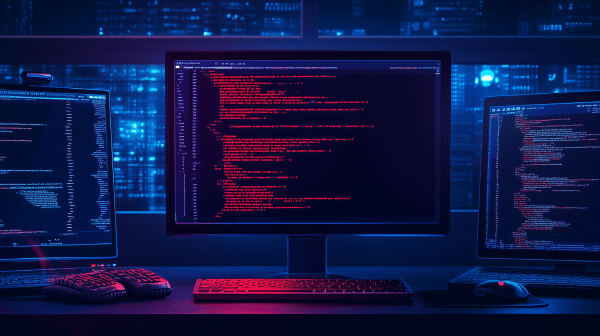Why Red Teaming Is Critical for Generative AI Safety, Security, and Success

As generative AI becomes embedded in the products and platforms people use daily, the need for trust, safety, and reliability has never been greater. With language models generating everything from marketing copy to medical advice, even small vulnerabilities can carry large-scale consequences. Red teaming has emerged as one of the most important tools for identifying and addressing those vulnerabilities before they can be exploited.
The practice of red teaming is not new. It originated during the Cold War, when military strategists developed red and blue teams to simulate adversarial conflict. It later became a staple in cybersecurity, where red teams emulate attackers to test defenses. Today, that same mindset is being applied to AI. Organizations are adopting red teaming strategies to probe large language models (LLMs) for weaknesses, from biased or harmful outputs to compliance failures and prompt manipulation.
Recent regulatory shifts have further emphasized the importance of red teaming. Executive Order 14110, issued in the US in 2023, mandated adversarial testing for high-risk, dual-use AI models. The EU AI Act took it even further, requiring red teaming for foundational AI systems deployed across European markets. Although the US order was later revoked, the message is clear: companies cannot wait for regulations to enforce safety. They must lead with proactive, responsible practices that protect users and support trustworthy innovation.
The Unique Challenge of Red Teaming in AI
AI systems are dynamic and unpredictable. A model’s output may vary depending on subtle prompt changes, training data, or user interactions. This variability means red teaming cannot be a one-time event. It must be a continuous process that adapts as the model evolves.
Red teaming in GenAI focuses on a wide range of potential risks. These include:
- Misinformation and disinformation in sensitive domains like health, politics, and finance
- Bias and unfair treatment of different demographic groups
- Adversarial manipulation through prompt injection, jailbreaking, or token smuggling
- Generation of harmful or exploitative content
- Misalignment with platform policies or global regulatory requirements
Red teams use structured testing to evaluate how models behave under real-world stress. They explore how models handle complex or provocative prompts and simulate the tactics that malicious users might deploy. The goal is not just to find what is broken but to improve resilience and accountability across the AI system.
Agentic AI Introduces New Layers of Risk
The next frontier of generative AI is agentic AI. These are systems that combine LLMs with tools and APIs to act on user instructions. An agent might retrieve weather data, manage a calendar, or even navigate a website independently. This increased autonomy is powerful, but it also opens the door to new risks.
When agents access real-time data or external tools, they can become attack vectors. A single compromised agent could misinform other agents in a network, triggering cascading failures. In high-stakes environments like financial services, the results could be catastrophic. As AI becomes more autonomous, the need for strong red teaming grows even more urgent.
Learn more about how AI developers and Enterprise companies can mitigate the risks posed by Agentic AI without missing out on its benefits:
How to Build an Effective GenAI Red Teaming Program
To ensure safe and scalable AI deployment, red teaming must be approached as an ongoing program. It is not a project that ends after a single test phase. The most effective red teaming frameworks follow these principles:
- Balance safety with functionality
Models must sometimes engage with risky language in order to complete legitimate tasks. For example, a legal AI tool might need to process discriminatory language for analysis. It is important to create guardrails that enable necessary functionality without permitting harmful or unethical behavior. - Combine human expertise with automation
Automated tools can scale red teaming efforts quickly, but they cannot replace human insight. A hybrid approach is best. Domain experts can design seed prompts, while automated systems generate variations and score outputs. This allows for wide coverage and fast iteration. - Establish clear policies and risk profiles
Red teaming starts with mapping the full range of security and content risks, both at the model and application levels. These risks vary depending on business context and use case. Once identified, policies should be written and continuously updated to reflect acceptable and unacceptable behaviors. - Run diagnostics and evaluate performance over time
Safety testing should include prompts of varying difficulty, as well as repeated prompts to assess model consistency. Because AI is stochastic, vulnerabilities often show up across a percentage of outputs, not just one instance. A reliable system should perform well across many iterations and edge cases. - Implement multi-layer mitigation strategies
Training alone is not enough to ensure safety. Effective systems include layered mitigation, such as keyword filters, output moderation, escalation workflows, and manual review. Red teaming findings should be directly tied to improvement actions across the AI lifecycle.
Why External Red Teams Offer a Valuable Perspective
Many organizations lack the resources or expertise to run comprehensive adversarial evaluations in-house. External red team partners bring fresh perspectives, threat intelligence, and domain-specific experience. They can uncover overlooked vulnerabilities, offer independent validation, and benchmark your models against industry standards without taking valuable developer resources.
Third-party evaluations also signal a strong commitment to transparency and responsibility. As regulatory scrutiny increases, working with trusted external partners can help organizations stay ahead of future requirements and demonstrate compliance in a credible way.
The Future of Responsible AI Requires Red Teaming
Red teaming is one of the clearest paths forward in making AI safer and more reliable. It is a critical component of any responsible AI strategy. By continually testing, adapting, and learning from the ways AI can go wrong, organizations can build systems that better serve their users and protect against harm.
For a deeper dive into the risks and mitigation strategies for GenAI, along with a comprehensive red teaming framework, read our report Mastering GenAI Redteaming – Insights from the Frontlines.
Let us know if you want help evaluating your GenAI systems or building a red teaming program designed to grow with your organization.

